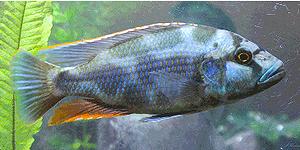 莫三比克政府9日宣布尼亞薩湖(Lake Niassa)成為生態保留區,以保護這個全球最大且生物多樣性最高湖泊的物種與自然棲地。
莫三比克政府9日宣布尼亞薩湖(Lake Niassa)成為生態保留區,以保護這個全球最大且生物多樣性最高湖泊的物種與自然棲地。
莫三比克也在9日批准將尼亞薩湖列入國際重要溼地公約(拉姆薩公約)保護之下,指定範圍包含了前述新設之保留區,以及週遭溼地與水系。
這個獨特的生態系擁有世界唯一倖存的淡水珊瑚,超過1000種魚類,其中 700 種屬於當地特有種,豐富的鳥類生態,包含魚鷹、禿鷹、貓頭鷹與老鷹。
這個湖泊位於鳥類的遷徙路線上,鳥類利用湖泊邊緣作為中途轉運站,在歐洲與非洲之間遷徙。
這個東非大裂谷最南端的湖泊是世界第八大,也是非洲與第二深的湖泊。遼闊的平原延伸到湖泊南部,北方則是陡峭的山脈。湖面寬52英哩,南北長365英哩,又被稱做日曆湖。
 世界上絕大多數的慈鯛科只分布在尼亞薩湖,在其他地方都找不到。而湖內不斷有新種被發現。
世界上絕大多數的慈鯛科只分布在尼亞薩湖,在其他地方都找不到。而湖內不斷有新種被發現。
尼亞薩湖支持著週遭的居民,他們從事漁業、農業、養殖、狩獵、貿易與手工藝,讓尼亞薩湖面臨著過度開發的威脅。
為了協調人們以及保護自然資源的需要,以村落層級發展了各項監督機制,包括非法與過度捕撈監控,水土保持與森林砍伐,漁業管理以及減輕氣候變遷的影響。
為了保護主要的食物與收入來源,當地居民成功的達成了多項讓步措施,包括在每年湖中的鮭魚以及其他物種產卵時,在河川實施禁漁,並且在繁殖季保護產卵場。
他們成立社區巡護隊,負責地區管理,並且與莫三比克海軍合作執法,處理非法捕魚、盜伐、非法移民、礦物盜採並打擊海盜。
世界自然基金會(WWF)東非與南非區域計畫辦公室代表 Rubina Haroon 說,「保護尼亞薩湖對當地漁業有立即且持續的功效,提供了當地居民所需的食物也保障了他們的生計。」
Haroon 表示,「透過加入當地居民參與以及政府意願的創新用水管理方法,我們可以在當地特有魚種生活史中的關鍵階段給予保護。」
這是莫三比克的第一個淡水湖保護區,面積達47800公頃,另含相鄰的緩衝區89300公頃。
保護區由漁業部管理,並由旅遊部以及環境事務協調部支援。此生態系的保護使莫三比克北部的旅遊業得以發展,透過潛水、賞鳥、釣魚以及探險步道等吸引觀光客。
The Mozambique government Friday declared Lake Niassa to be a reserve, safeguarding the species and natural habitats of one of the world's largest and the most biodiverse lakes.
Mozambique also Friday approved the protection of Lake Niassa under the Convention on Wetlands of International Importance, known as the Ramsar Convention. The Ramsar site includes the new reserve as well as the surrounding wetlands and watershed.
This unique ecosystem holds the world's only surviving freshwater corals; over 1,000 species of fish, 700 of which are endemic to the lake; and a wealth of bird life, including ospreys, palm nut vultures, owls and eagles.
The lake lies along flyways for birds that use the lake margins as staging areas as they migrate between Africa and Europe.
This southernmost lake in the Great Rift Valley system of East Africa is the eighth largest lake in the world and the second deepest lake in Africa. Vast plains extend to the south of the lake and steep sided mountains rise to the north. As it is about 52 miles wide and 365 miles long from north to south it is also known as The Calendar Lake.
The vast majority of the world's cichlid species are endemic to Lake Niassa and found nowhere else on Earth. New species are continually being discovered in the lake.
While Lake Niassa is facing threats from overexploitation, it supports the surrounding population, enabling fishing, agriculture, animal rearing, hunting, trade and handicrafts.
To reconcile the needs of the people with the need to protect natural resources, village level mechanisms for monitoring illegal and overfishing, erosion and deforestation, managing fisheries, and mitigating the impacts of climate change have been developed.
Local communities were instrumental in achieving success by making several concessions in order to protect their main source of food and income by agreeing to the closure of all fishing rivers during the annual spawning runs for lake salmon and other species, and the total protection of spawning beds during breeding season.
They created a team of community rangers responsible to district administration and cooperating with the Mozambique Navy to enforce existing laws surrounding illegal fishing, timber cutting, illegal migration, mining and piracy.
"Protecting Lake Niassa will have an immediate and lasting impact on the health of the fisheries located within it, providing security to the people who depend on the lake for their food and livelihoods," said Rubina Haroon, who represents WWF's Eastern and Southern Africa Regional Programme Office.
"Through an innovative approach to water use management, input from the local communities and the will of the government, we are able to protect endemic species of fish during the critical stages of their lifecycle," said Haroon.
The new reserve is the first freshwater lake under protection in Mozambique. It covers an area of 47,800 hectares adjoined by a buffer zone of another 89,300 hectares.
The reserve will be managed by the Ministry of Fisheries with support from the Ministry of Tourism and Ministry for Coordination of Environmental Affairs. Protection of this ecosystem enables plans to develop the tourism industry in northern Mozambique by appealing to travelers interested in diving, bird watching, game fishing and adventure trails.
全文及圖片詳見:ENS報導








